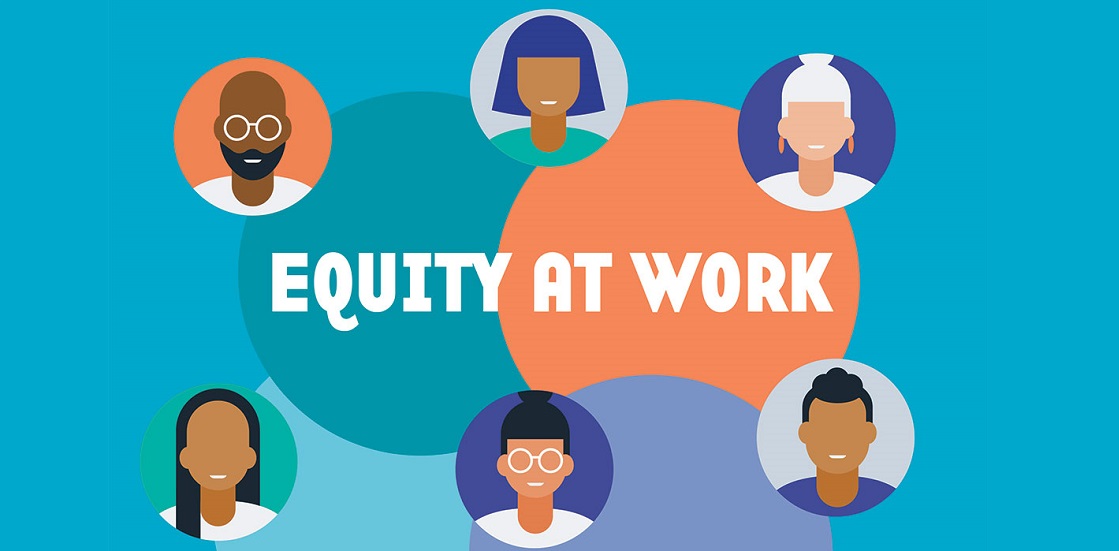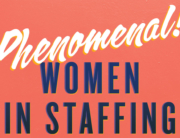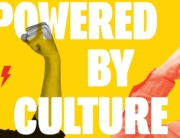The past year brought a whirlwind of change to not only the US, but the entire world. While under the grip of a once-in-a-lifetime pandemic, communities also came face to face with the harsh realities of racism and discrimination, which in turn led to calls for addressing inequities, biases and other barriers to employment that affect a huge swath of their populations. From Black Lives Matter protests to the killing of George Floyd to the homeless crisis to attacks on Asian Americans and more, the differences between the haves and the have-nots have become strikingly apparent.
This has pushed business executives, community leaders, politicians and the public at large to demand diversity, equity and inclusion for all people and a change to business as usual. It has also altered the landscape and catapulted the priority of diversity, equity and inclusion efforts for both staffing providers and the buyer clients they serve.
“Once a lower priority, diversity hiring – as well as diversity and inclusion programs among contingent workers – is now a high priority, spurred by recent societal events, and driven by senior-level executive sponsorship, the changes in talent needs in the new economy, and a more distributed workforce,” states a research report released in November 2020 by SIA, commissioned by HireTalent and Consciously Unbiased with the support of Beeline. It found nearly two-thirds of the executives surveyed, 63%, believe that the recent social climate has caused diversity and inclusion practices to become a higher priority.
DE&I means providing not only a fair chance for employment, but also for inclusion and career advancement. It means having a workforce that is representative of where the organization’s community lives, works and plays.
“I always say diversity is when you look around and you see so many different people in the company that you stop noticing,” says Ashish Kaushal, founder of Consciously Unbiased, a firm focused on promoting diversity and inclusion in the workplace, and CEO of staffing firm HireTalent. “Inclusion is when everyone feels the ability to share their ideas, you include them in the process, you welcome their voices and amplify them. And then belonging is when those voices are both heard and then acted upon.”
It is creating an environment that is open to different ideas; it’s one thing to invite someone to the party, but they should also be asked to dance. And whose responsibility is that? We take a look at how the workforce solutions ecosystem is approaching the issue.
Fundamental Shift
“I genuinely believe that this space requires a paradigm shift in terms of how we think about issues of diversity and inclusion within both the staffing context, but also with the end-users as well,” says Dionysia Johnson-Massie, shareholder at law firm Littler Mendelson P.C.
Clients should consider that the staffing industry is not permitted to engage in certain conduct that the end user or the buyer of staffing services can’t engage in; for instance, they should avoid requesting that a single source staffing provider send only candidates of color or only female candidates. However, buyers certainly can ask suppliers to be mindful about including diverse talent when sending talent over for consideration, Johnson explains.
That means doing the legwork necessary to diversify your talent pipeline and investing time on the front-end.
“But if we are really trying to enhance diversity, it really does require us to think about how we attract talent differently and how we ready our own pools with diverse talent before specific opportunities arise,” Johnson-Massie says. “So, it is a paradigm shift for some.”
Diversifying Talent Pools
It’s not possible to send diverse candidates to clients if you don’t have them to start with. Enhancing diversity requires staffing providers to use different strategies to develop pools of diverse talent to tap into when the opportunities arise.
“I think the first obstacle is recognizing that diversity, equity and inclusion is a journey. It’s not a destination,” says Audra Jenkins, chief diversity and inclusion officer at Randstad.
“There’s no cookie-cutter strategies out there. I think companies need to have a realistic, honest assessment of where they are and their readiness for diversity, equity and inclusion,” she says. “I think that’s important, especially for staffing firms, that historically have not been at the forefront of diversity for many, many years.”
Randstad is building its diverse-talent pipeline in a variety of ways and like many on the forefront, this includes taking steps to develop talent with training as well as outreach. And Jenkins is the executive sponsor of its Hire Hope program, which aims to help women survivors of homelessness, domestic violence, and human trafficking. It provides them with 35 weeks of training, followed by paid apprenticeships and ultimately placement in job opportunities with Randstad clients — a win for Randstad, its clients and the women.
Primary Talent Partners developed its diversity programs by investing in different resources and avenues for finding diverse candidates with the goal of expanding the staffing provider’s talent pool of highly qualified Black STEM workers, says founding Partner Tinisha Bookhart; through the Enrich program, Primary Talent Partners aims to attract students to STEM programs, help ensure they finish their program of study and then mentor them to reduce negative attrition. The program begins in grades K-12, bolstering Black children’s interest in STEM. That leads into a scholarship program for college students, a scholars program to provide support through their college experience, an internship program and, ultimately, permanent placements at no cost to its enterprise clients.
With a level playing field, “you have those two résumés side-by-side, you can truly make a good choice and a good conscious decision regarding who you want to accept in this position, all things being equal,” Bookhart explains. “We are trying to create that culture for our clients, that opportunity, so that they will have access to diverse talent. We are really trying to create that talent pool — not just leverage the existing, but also to create it.”
Finding diverse talent also means looking in the right places. While historically Black colleges and universities are an obvious place to recruit professional talent, temporary staffing providers often need candidates for non-professional roles. Recruiters need to reach out to programs that serve diverse communities — such as veterans’ groups, outreach services, religious institutions and community-based groups — as well as organizations such as Black Women in Science and Engineering, an organization focused on bridging the leadership gap for Black women in STEM, and Fairygodboss, a LinkedIn-like career community for women.
But most important, finding diverse talent for your talent pool needs to be a priority.
“For us, it’s a true emphasis on making sure that we’re looking for different types of people with different types of backgrounds, both their professional background as well as their personal background,” says Allison O’Kelly, founder and CEO of professional recruitment agency Corps Team. “If you make it a priority, then there are a lot of people out there; it’s just a matter of finding them.”
O’Kelly’s team does not necessarily change its recruiting tactics, but stays very focused on making sure they present a diverse slate of candidates.
“Obviously we’re going to present the best candidates,” she says, “but we’re going to make sure that if they’re all similar in background, we’re going to find the best of those, and find a few others with a different background but equal in experience, and make sure that we’re presenting that diverse slate.”
Client Slant
In fact, Corps Team’s clients are increasingly demanding diverse candidates. O’Kelly describes it as “night and day.” In the last 10 years, clients had mentioned that they would like diverse candidates; now, they state they won’t make an offer without having seen a diverse slate of candidates.
“The problem is, if you’re not interviewing diverse candidates, you’re not hiring diverse candidates,” O’Kelly explains. “So, a lot of companies are really starting to be very strict about how this looks for them — and that’s a great thing.”
Clients are very much interested in partnering and learning together, says Michelle Nettles, chief people and culture officer at ManpowerGroup Inc. While there is no “magic bullet,” there is sharing experiences of what works and what doesn’t. “One of the big things coming out of Covid is that you see more partnerships and even the coming together of ‘frenemies’. There is lots of collaboration and working across sectors and industries, partnering in order to really advance diversity, inclusion and equity.”
Tracking Progress
What does success within a DE&I program look like, and how do you know if headway is being made? There are several ways to measure progress.
“It helps to manage diversity like a business. If I start a new division within my company and I had 2% year-over-year growth, I’d probably fire me,” says Kaushal. “You have to manage the business diversity piece like that, too. If you’re setting goals, make sure they’re realistic, but also make them stretch goals and measure them. Make sure you’re getting the growth that you would on a business unit, because DE&I is not only the right thing to do — it’s also good for the bottom line.”
Is the needle moving on the number of workers from underrepresented communities? This requires a clear assessment of a current workforce to determine where there are gaps and opportunities to improve. For example, Randstad examines its numbers, metrics and goals every quarter in its Executive Diversity Council meetings and has open dialogue on its efforts as well as where the quick wins and potential opportunities are.
Another important component is the workplace experience — inclusion and belonging.
“The numbers could be moving, but I always say this: At the end of the day, if you hire into an organization that has a toxic culture, then the diversity will not stay,” says Randstad’s Jenkins. “You could bring in diversity all day long. We can bring in expertise all day long. We can put money toward things all day long, but if you don’t have the culture, the climate, that empathy in that climate, that progression around that serious commitment level — not just talking about it, but walking it out and living it — then it’s not going to be authentically inclusive for diverse talent.”
Also keep track of your reputation. Any marginalized group will check online sources to see if they will be treated fairly and with respect and civility as well as compensated fairly for the work that they’re doing. Many job posting sites have a diversity ranking that can affect your ability to attract or retain diverse talent. Pay equity is also important to monitor, especially for women.
Inclusion is more subjective and therefore more difficult to measure, but it is no less important and still achievable by conducting internal surveys with recently hired diverse staff. If workers feel welcome and positive about their jobs and their company, it will translate into better results for the company.
Leslie Vickrey, CEO and founder of ClearEdge Marketing, which serves staffing and HR tech brands, also advises conducting a sentiment survey for insight on whether people feel included in the company.
“You need to look to see whether the data matches the sentiment of what the company, the culture is today, and then decide what you need to do to fix that,” Vickrey says. “My personal opinion is that you could walk away with 10 things that need to change, but as long as you have a roadmap and a plan, pick the things that will make the biggest and greatest impact and really get behind them, then you can start seeing the results and the benefits of it; it could really change the shape of your company if you take the time to do that.”
Forward Together
Going forward, staffing providers must continue to collaborate with their clients as well as thought leaders and each other to further the DE&I journey. We all have a vested interest in the well-being, safety and health of all of our workers.
“Culture matters. It’s not just enough to attract diverse people; you need the culture that retains and develops them and ensures everyone feels they belong,” says ManpowerGroup’s Nettles. “Those things hang together when you’ve created a culture of inclusion, when workers feel like they are a part of something bigger.”
The more pragmatic and practical steps for the industry going forward include holding itself accountable and self-reflecting on areas that need improvement. Self-regulation, self-governance and individual accountability will be paramount.
And be bold.
“Be courageous in your action,” advises Orlando Williams, president, CEO and chief equity officer at Oregon-based Motus Recruiting & Staffing Inc. “Be courageous in your thoughts. Be courageous in how you approach this work. Because we in the staffing world have the unique opportunity and unique responsibility to help our employers be diverse with diverse talent, diversity of thought and diversity of action.”







